 Abraham Lincoln
If given the truth, the people can be depended upon to meet any national crisis...
Abraham Lincoln
If given the truth, the people can be depended upon to meet any national crisis...
 Guildford news...
for Guildford people, brought to you by Guildford reporters - Guildford's own news service
Guildford news...
for Guildford people, brought to you by Guildford reporters - Guildford's own news service
First Phase Of Restoration Work At Chilworth Gunpowder Mills Completed
Published on: 24 Sep, 2020
Updated on: 28 Sep, 2020
Restoration work has been completed at Chilworth Gunpowder Mills, improving access for visitors at this important heritage site.
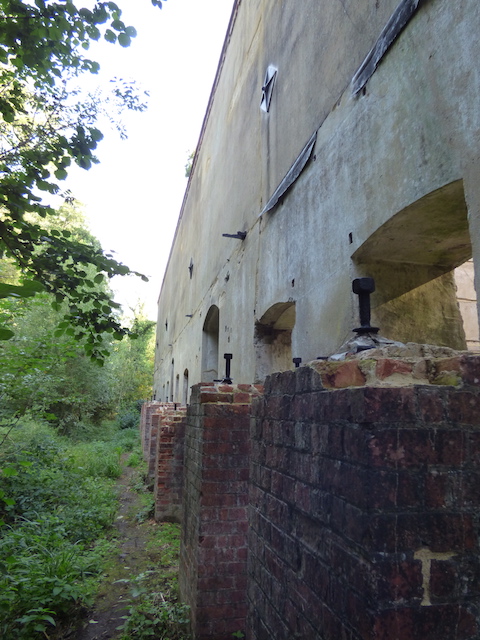
Structural repairs have been made to the 1880s buildings at Chilworth Gunpowder Mills.
It coincides with the 100th anniversary of the closing of the mills that were established in 1626 by the East India Company.
The site, a scheduled ancient monument, was bought by Guildford Borough Council in the 1970s, to maintain it for free access, ecological and recreational benefits as well as for its unique historic interest.
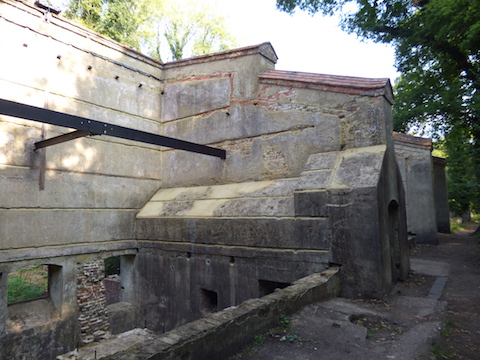
Among the repairs, exposed metal work has been painted black.
The work includes repairs to the 1880s steam-powered mill buildings, improvements to three bridges, strengthening of earth and brickworks, rebuilding of the sluice, the clearance of overgrown vegetation and the removal of graffiti. A new visitors’ information board will also be installed soon.

a stainless steel support frame has been added to the bridge which led to the 1880s steam-powered mills.
Biodegradable matting, to prevent erosion, has been laid around the blast mounds which protected buildings from the force of explosions. This is part of a vegetation management plan for the entire area, to maintain full public access.
The council’s lead councillor for the environment, arts and tourism, James Steel (Lib Dem, Westborough), said: “As the work has only recently been completed we are still finalising total costs but we expect the total spend to be approximately £180,000, as budgeted.”
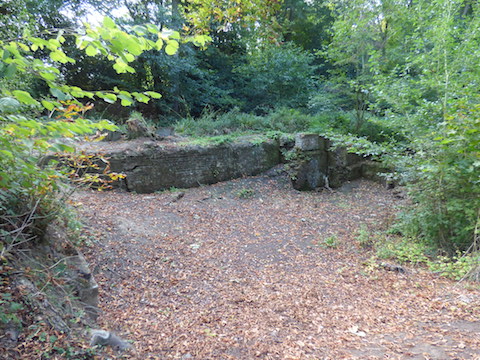
Views of specific parts of the mills have been improved.
This work is part of an ongoing programme of significant improvements made by the council in partnership with volunteers from the Chilworth2gether community group.
A second phase, to build new handrails to the steam-powered mills, repair the culvert and brick spillway to further improve drainage, and create two additional information boards, is currently being planned.
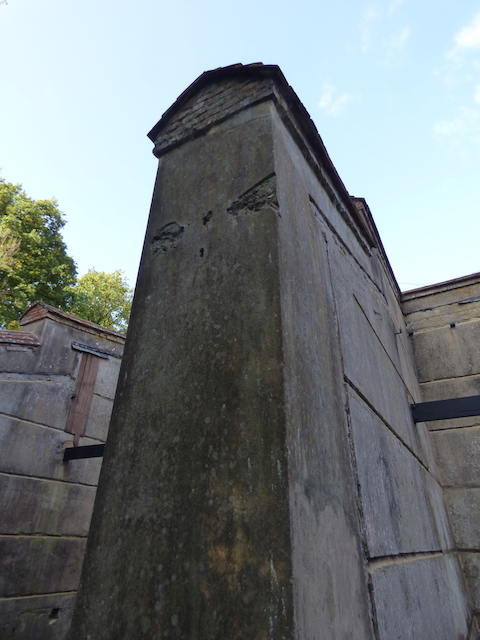
The imposing buildings still standing are well worth a visit.
The site features more than 100 buildings and it has been awarded Green Flag status for the past three years in recognition of its status as a safe and welcoming place to visit with tremendous natural and historic interest.
Chilworth was once one of the largest gunpowder mills in the country. For some periods in its early history it was the sole supplier of gunpowder to the Crown, and played a key role in the English Civil War (1642-1651), when it supplied powder to the Parliamentarians.
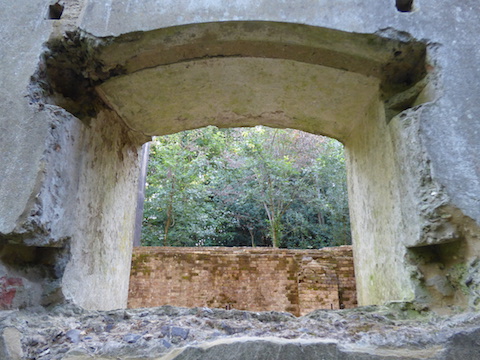
Explore at you will this free to visit heritage site.
By the 1900s the mills were owned by a German company. In 1904 Captain Tom Tulloch took over the management of the site. As researched some years ago by John Glanfield, Tulloch was given unrivalled access to Germany’s armaments industry. For 10 years he passed on vital information of Germany’s munitions and weapons developments to the Admiralty and War Office. But they took no notice of his findings.
He even got wind of Germany’s military adoption of TNT, a new product much superior to Lyddite. He offered the Admiralty and War Office full details of German manufacture of TNT and the related weapons systems. But they would not listen to him on grounds of cost. It can be said that he was the spy to whom no-one would listen.
October 13, 1915 was Guildford’s night of terror when a German Naval Zeppelin airship, the L13, circled over Guildford dropping 12 bombs in the St Catherine’s area and Shalford Park. There were no fatalities, although a number of buildings were damaged by the blasts, but it caused utmost distress among local people during that period of the First World War.
As noted by historian Frank Phillipson, at 10.05pm that evening the airship passed over Newlands Corner. At 10.10pm it was over Guildford. By 10.15pm it flew over the Chilworth Gunpowder Mills and soldiers manning its anti-aircraft gun started firing at the airship in the night sky.
The airship then veered off westward but circled back round but then went off westwards again and was over Guildford at 10.20pm. It carried on to Wood Street Village, but then turned south-east over the Hog’s Back to St Catherine’s. From 10.25pm to 10.30pm bombs dropped on St Catherine’s.
From 10.35pm to 10.40pm: it flew back over the Chilworth Gunpowder Mills and headed off in the direction of Dorking. Click here and here for previous stories on the Zepplein raid.
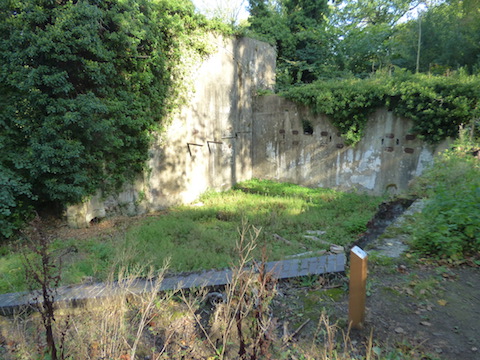
It’s peaceful these days, but for nearly 300 years it was a hive of industrial and dangerous activity as gunpowder and explosives were produced here.
Owing to the nationwide housing shortage after the Second World War, families in need of a home took to living in some of the then disused cottages and mill buildings.
There was no electricity supply, therefore lighting was by paraffin lamps. With no mains drainage, basic outside Elsan loos were used.
However, for a few years around the mid-1950s there was a good community spirit among those who lived there. It was named ‘Tin Town” and its believed the last people left in 1963.
The council adds that visitors to the site can see the ruins of the 17th-century buildings, and enjoy a picnic and a walk along the Tillingbourne Stream.

There are three ways to enter the Chilworth Gunpowder Mills all from the A248. From this entrance (east end of the site) down a lane by Lockner Farm. From a footpath to the left of Chilworth Infant School. And at the western end, off Blacksmith Lane, by West Lodge, a gunpowder mills building whose fate is yet to be decided by Guildford Borough Council.
The site is approximately 70% wet woodland, which is listed as a priority habitat in the UK biodiversity action plan.
It is dominated by willow, alder, and hazel trees, interspersed with older standards of yew, Scots pine, maple and oak, plus hawthorn, ash, blackthorn, elder and holly. Among the wildlife found at the site are common toads, dormice, several species of bat, and a number of nationally scarce species of moths.
Historic England, the government body which protects historic buildings and ancient monuments, approved the works carried out by contractor PAYE Stonework and Restoration Ltd, a specialist conservation contractor, with Hockley & Dawson Structural Engineers and Press & Starkey Quantity Surveyors.
Click here for further information on Chilworth Gunpowder Mills, including a downloadable Heritage Trail leaflet.
Story based on a press release from Guildford Borough Council, plus additional historical information and photos by David Rose.
Responses to First Phase Of Restoration Work At Chilworth Gunpowder Mills Completed
Leave a Comment Cancel replyPlease see our comments policy. All comments are moderated and may take time to appear.

"Found any?" - "Nope, it all looks green to me!" (See Opinion: The Future is Congested, the Future is Grey)
www.abbotshospital.org/news/">





Recent Articles
- Latest Evidence in Sara Sharif Trial
- Ash’s New Road Bridge Is Named – and November 23rd Is Opening Day
- Class A in Underwear Leads to Jail Sentence
- Historical Almshouse Charity Celebrates Guildford in Bloom Victory
- Notice: Shalford Renewable Showcase – November 16
- Firework Fiesta: Guildford Lions Club Announces Extra Attractions
- Come and Meet the Flower Fairies at Watts Gallery
- Updated: Royal Mail Public Counter in Woodbridge Meadows to Close, Says Staff Member
- Letter: New Developments Should Benefit Local People
- Open Letter to Jeremy Hunt, MP: Ash’s Healthcare Concerns


Recent Comments
- Paul Spooner on Ash’s New Road Bridge Is Named – and November 23rd Is Opening Day
- Harry Eve on Opinion: The Future is Congested, the Future is Grey
- Nigel Keane on Letter: New Developments Should Benefit Local People
- Nathan Cassidy on Updated: Royal Mail Public Counter in Woodbridge Meadows to Close, Says Staff Member
- T Saunders on Opinion: The Future is Congested, the Future is Grey
- Jim Allen on Updated: Royal Mail Public Counter in Woodbridge Meadows to Close, Says Staff Member
Search in Site
Media Gallery
Dragon Interview: Local Artist Leaves Her Mark At One of England’s Most Historic Buildings
January 21, 2023 / No Comment / Read MoreDragon Interview: Lib Dem Planning Chair: ‘Current Policy Doesn’t Work for Local People’
January 19, 2023 / No Comment / Read MoreA3 Tunnel in Guildford ‘Necessary’ for New Homes, Says Guildford’s MP
January 10, 2023 / No Comment / Read More‘Madness’ for London Road Scheme to Go Ahead Against ‘Huge Opposition’, Says SCC Leader
January 6, 2023 / No Comment / Read MoreCouncillor’s Son Starts Campaign for More Consultation on North Street Plan
December 30, 2022 / No Comment / Read MoreCounty Council Climbs Down Over London Road Works – Further ‘Engagement’ Period Announced
December 14, 2022 / No Comment / Read MoreDragon Interview: GBC Reaction to the Government’s Expected Decision to Relax Housing Targets
December 7, 2022 / No Comment / Read MoreHow Can Our Town Centre Businesses Recover? Watch the Shop Front Debate
May 18, 2020 / No Comment / Read More







John Harmer
May 3, 2021 at 11:10 pm
It says in the article “The site features more than a hundred buildings” Is it referring to surrounding residential property? As I was visited the Mills today and there isn’t a fraction of that figure up there.
David Rose replies: The figure of “more than a 100 buildings” is Guildford Borough Council’s estimate.
John Lomas
May 4, 2021 at 5:39 pm
Archaeologically speaking, partial remains of foundations or maybe even signs of lost foundations would possibly be counted as buildings.